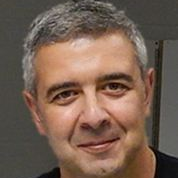Software and Hardware Development for Applications Using Point or Imaging Spectroscopy Data
A special issue of Remote Sensing (ISSN 2072-4292). This special issue belongs to the section "Remote Sensing Image Processing".
Deadline for manuscript submissions: closed (31 August 2023) | Viewed by 4208
Special Issue Editors
Interests: machine learning; deep learning; data-driven modeling; hyperspectral imaging; precision agriculture
Interests: machine learning; neural networks; hyperspectral technology; forest fire detection; agriculture applications
2. Algoritmi Center, University of Minho, 4800-058 Guimarães, Portugal
Interests: computer vision; machine learning; hyperspectral imaging; image classification; object detection
Special Issues, Collections and Topics in MDPI journals
Special Issue Information
Dear Colleagues,
In this Special Issue, we are interested in compiling works regarding developments in multispectral and hyperspectral imaging, with emphasis on, but not limited to, hardware developments and field applications of the technology. Articles that present results regarding point spectroscopy are also welcome.
Regarding the development of hardware, we are particularly interested in new technologies, setups, and layouts that reduce camera costs and allow the widespread use of the technology. Miniaturization is also a topic of interest, together with the possibility of the use of cameras in drones.
Regarding applications, some possible areas of research are agriculture and fisheries, forest surveillance, water quality, mineral mapping, food quality and safety, automotive quality control, and any subtopic relating to these. Articles regarding applications in airborne or spaceborne sensors are also welcome. In addition, studies concerning the use of these types of cameras in factories will be highly relevant due to an increasing demand for high-quality products/processes at lower costs.
Studies regarding novel machine learning algorithms or state-of-the-art neural network architectures applied to multispectral and hyperspectral imaging solutions will be also valued, with emphasis, for instance, for spectral super-resolution, multispectral to hyperspectral image mapping, or RGB to multispectral imaging mapping, which may help in the integration of less expensive solutions while still using predictive models trained from data with higher spectral resolutions, with minimal losses in performance, during classification or regression tasks.
Dr. Véronique M. Gomes
Dr. Armando Fernandes
Prof. Dr. Pedro Melo-Pinto
Guest Editors
Manuscript Submission Information
Manuscripts should be submitted online at www.mdpi.com by registering and logging in to this website. Once you are registered, click here to go to the submission form. Manuscripts can be submitted until the deadline. All submissions that pass pre-check are peer-reviewed. Accepted papers will be published continuously in the journal (as soon as accepted) and will be listed together on the special issue website. Research articles, review articles as well as short communications are invited. For planned papers, a title and short abstract (about 100 words) can be sent to the Editorial Office for announcement on this website.
Submitted manuscripts should not have been published previously, nor be under consideration for publication elsewhere (except conference proceedings papers). All manuscripts are thoroughly refereed through a single-blind peer-review process. A guide for authors and other relevant information for submission of manuscripts is available on the Instructions for Authors page. Remote Sensing is an international peer-reviewed open access semimonthly journal published by MDPI.
Please visit the Instructions for Authors page before submitting a manuscript. The Article Processing Charge (APC) for publication in this open access journal is 2700 CHF (Swiss Francs). Submitted papers should be well formatted and use good English. Authors may use MDPI's English editing service prior to publication or during author revisions.
Keywords
- hyperspectral imaging
- multispectral imaging
- point spectroscopy
- machine learning for applications
- low-cost hardware
- hardware miniaturization
- industrial Applications






